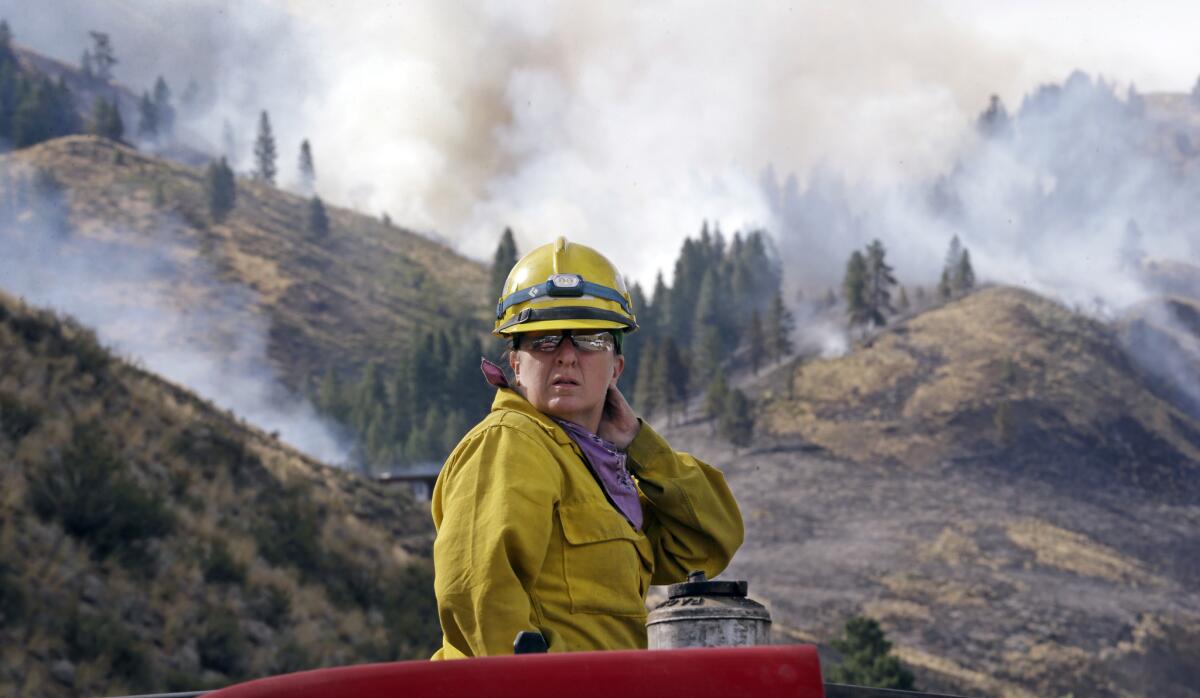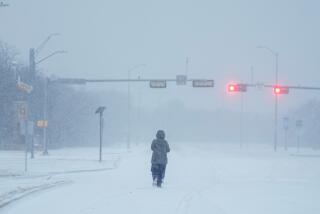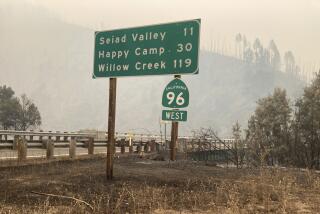Pacific Northwest fires continue to spread, threaten homes

Cooler temperatures may briefly aid firefighters trying to contain 22 fires in the Pacific Northwest, but hot and dry summer weather will return later next week and is expected to continue fueling the blazes.
Uncontained large fires in Oregon and Washington — nearly all of which started as a result of a lightning storm that moved through the region last weekend — have burnt through more than 1,300 square miles, fire officials said Saturday.
The fires have destroyed 127 homes and outbuildings in the two states and continue to threaten hundreds more, said Tom Knappenberger, spokesman for the Northwest Coordination Center, a multiagency fire-fighting effort.
This week temperatures in the fire zones have varied, reaching the high 80s. Dan Peterson, a meteorologist for the National Weather Service, said temperatures are expected to drop next Tuesday, Wednesday and Thursday in various fire zones, about four to eight degrees lower than this week.
The lower temperatures, plus an expected quarter- to a half-inch of rain, Peterson said, won’t be enough to put out the blazes, but can temporarily prevent them from spreading further. There is a higher chance of rain further north in Washington and less of a chance in the southern part of Oregon.
“Hopefully the cooler temperatures, clouds and showers will help the firefighting effort,” Peterson said.
Knappenberger expressed less hope, saying that the relief will be small and that the return to high and dry temperatures after Thursday will continue to create extreme fire conditions.
Evacuation orders are constantly changing, with counties telling their residents to either get ready to leave or to get out immediately, depending on the hour.
The largest fire in Washington, the Carlton Complex fire, grew by more than 187 square miles in 24 hours to more than 336 square miles Saturday.
The Carlton Complex fire has knocked out power in Methow Valley, a popular area for hiking and fishing about 180 miles northeast of Seattle. The Okanogan County Sheriff’s Office ordered the evacuation of two towns in the valley Friday, Pateros and Brewster, home to more than 3,000 people.
The Buzzard Complex fire, the largest in Oregon, grew 150 square miles since Friday to a total of more than 576 square miles.
“This is particularly bad summer,” Knappenberger said. “It’s one of the bigger years we’ve had and we’re only in July.”
The wildfires prompted the governors of both states to declare states of emergency Thursday, which will allow officials to call on the National Guard for additional assistance.
There are more than 7,000 people and 49 helicopters battling the fires in Oregon and Washington, Knappenberger said.
The temperatures in June were two to six degrees higher than previous years and the probability of higher than normal temperatures continuing in California, Nevada, Oregon and Washington is high, Peterson said.
California and Nevada are experiencing severe droughts and expected to reach above-normal temperatures next Friday and Saturday, making them particularly vulnerable to fires, he said.
“The three-month outlook is also above normal in California, Oregon and Washington,” Peterson said. “That is not a good sign. It could get ugly.”
Follow @msrikris for the latest national news.
More to Read
Start your day right
Sign up for Essential California for news, features and recommendations from the L.A. Times and beyond in your inbox six days a week.
You may occasionally receive promotional content from the Los Angeles Times.






